This is recipe is actually a flight of three different chartreuse preparations:
- Blueberry / Coriander Syrup / Green Chartreuse
- Pineapple / Green Chartreuse / Yellow Chartreuse
- Honeydew Melon / Aloe Liqueur / Yellow Chartreuse
- Each of these is garnished with a mint flavored ice cube
This made my list of the first ten recipes to recreate based on availability of ingredients and special equipment. The spirits used are Green Chartreuse, Yellow Chartreuse and Chareau Aloe Liqueur.
The Chareau Aloe Liqueur was the only spirit I couldn’t find locally, but it’s a perfectly example of the kind of discovery I am hoping to make along the way. This clear liqueur is a stunner, with bold notes of aloe vera, cucumber and spearmint. The ingredients also list eau de via, lemon peel, muskmelon, sugar and water. The alcohol content is 25%. The day it arrived I immediately realized how delicious it was, then rushed to make one of the cocktail recipes printed on the little booklet hanging on the bottle:
Spa Cocktail – 1 ½ oz vodka, ¾ oz chareau, ½ oz lemon juice. Shake with ice, strain and pour into a tall glass with ice, top with club soda.
I must say, this tasted very much like the cucumber/citrus flavored water you find in the waiting area at most spas. It was very refreshing. I’m thinking this would be really nice carbonated and individually bottled. It would be great to have on hand on a hot day. But I digress.
3 Days Prior:
First step was to make the ice cubes. Blanche some mint, then plunge into an ice bath. Toss it in the Vitamix with some water and xanthan gum. The resulting liquid was a vibrant dark green, which I poured into 1 ¼ inch square ice molds. While it went to freeze, I started wondering what the xanthan gum was for.
See, in The Aviary Cocktail Book these things often aren’t explained, unlike in Liquid Intelligence, where Dave Arnold probably would have offered a page or two about the purpose of the xanthan gum, and the various split testing he did along the way.
My hypothesis: Xanthan gum is a stabilizer. It is added to keep all of the mint particles evenly distributed in the ice. Without it, the mint would likely sink toward the bottom of the ice cube, leaving you with a gradient cube from clear to green.
The result here: dark green ice cubes, even from top to bottom. They don’t taste like much, but offer a very nice aesthetic.
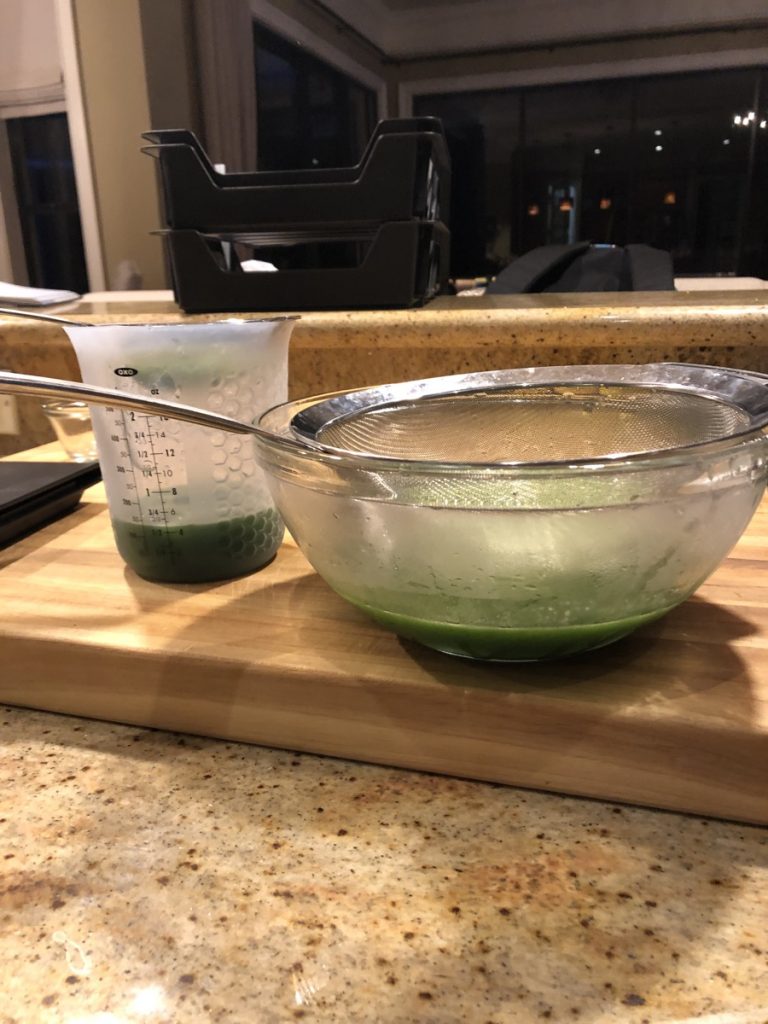
Mint puree 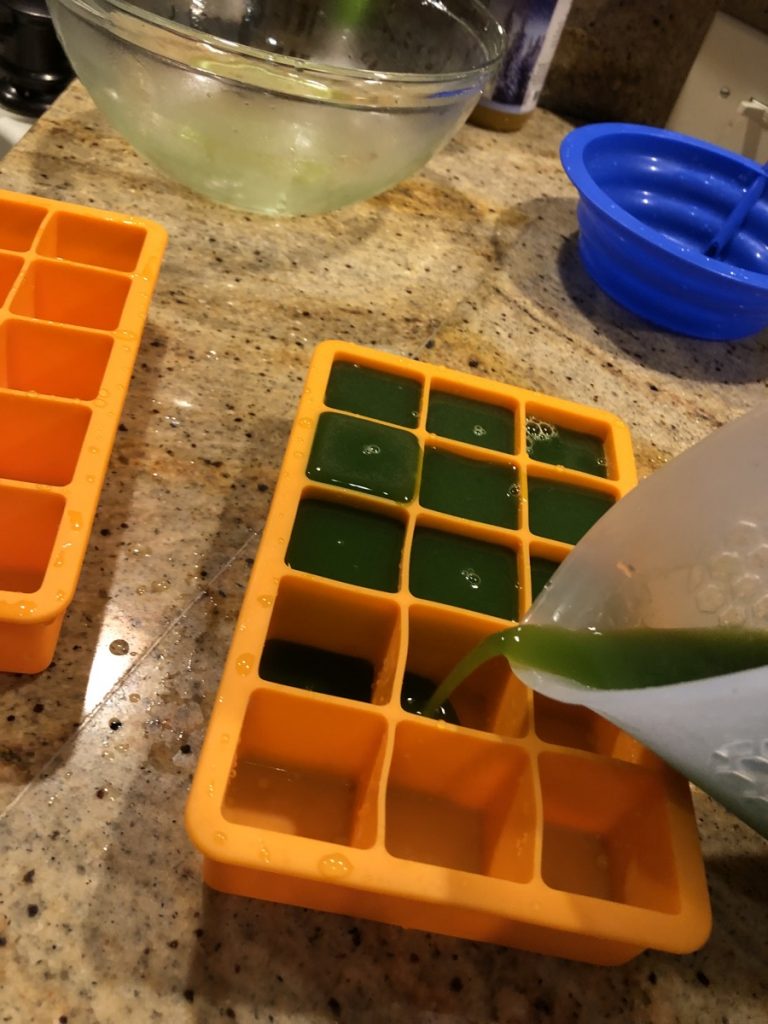
What is the xanthan gum for? 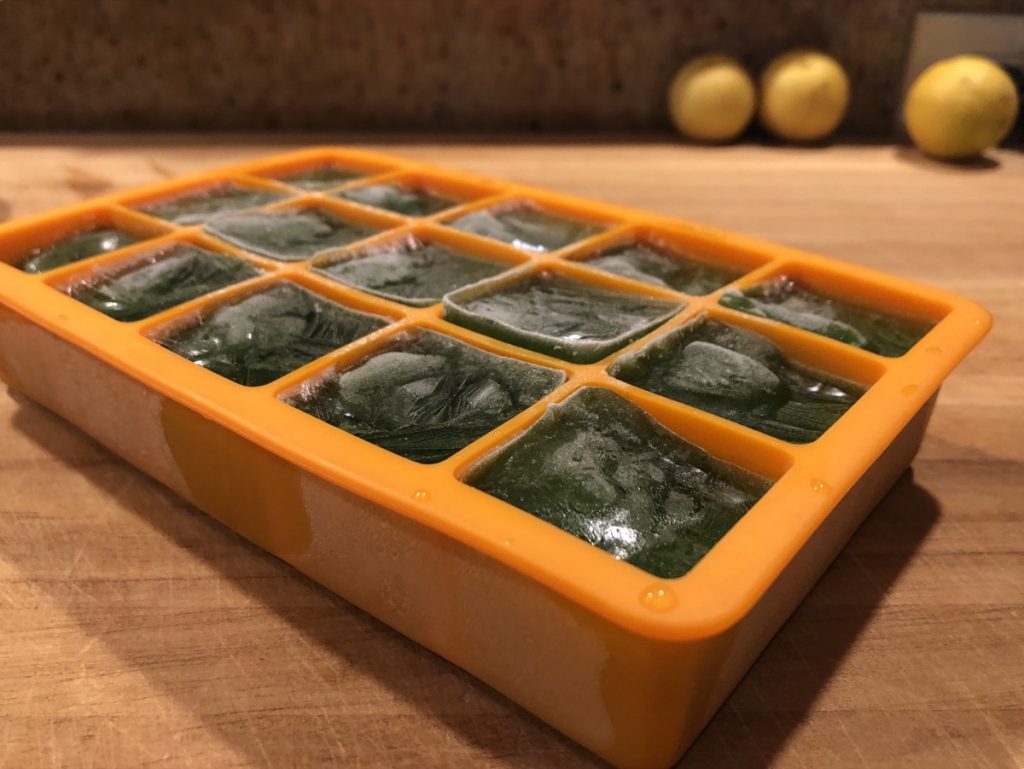
Dark green cubes
2 Days Prior:
The following day I made the coriander syrup. Unlike the ice cubes, this packs big taste! The coriander is quickly toasted, then water and sugar is added, boiled, then steeped for a couple house. Quick strain, then into a bottle. Toasting the coriander made a big impact.
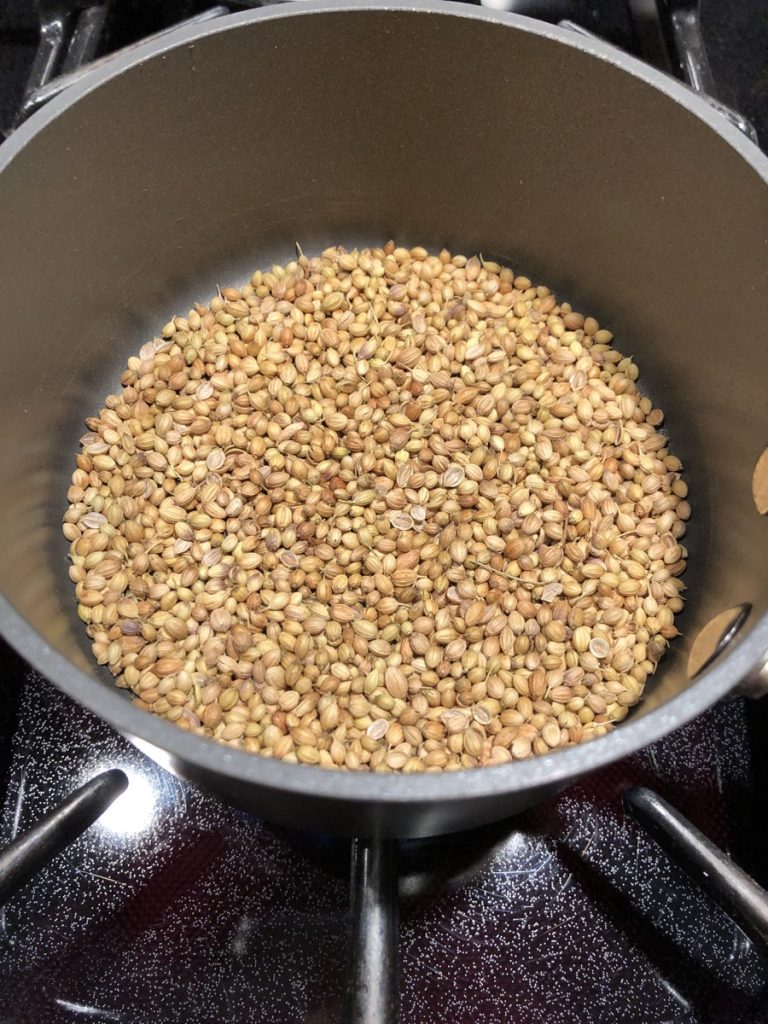
Toasting corriander 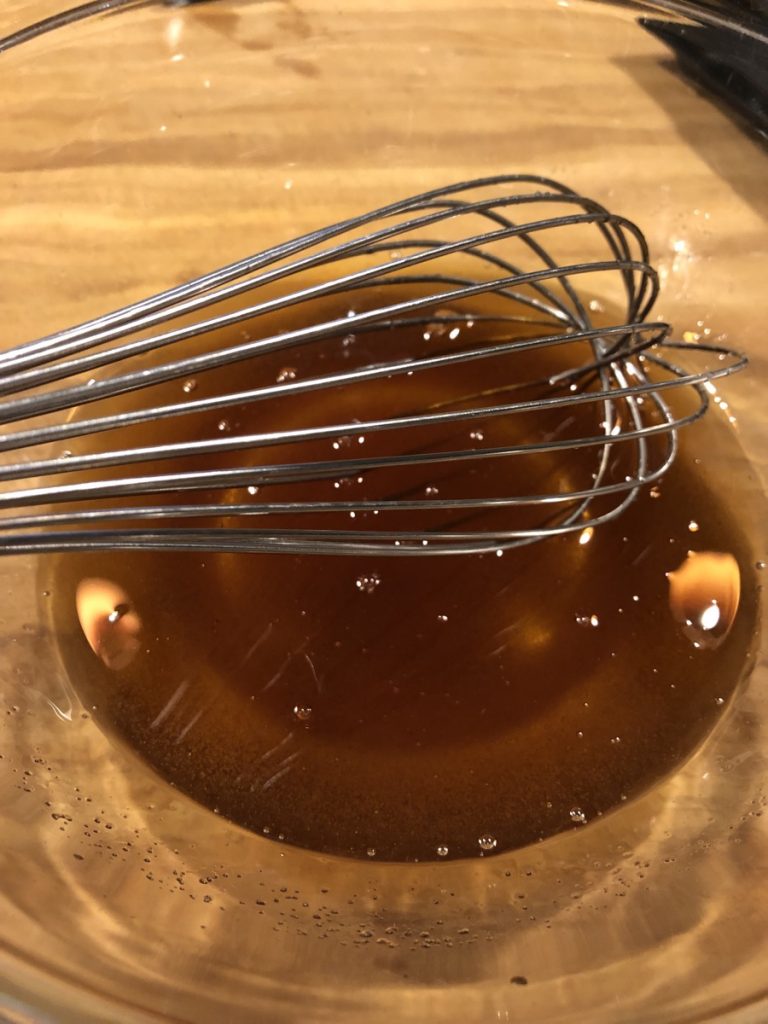
Corriander syrup
1 Day Prior:
Juicing pineapple and blueberries. The recipe called for 310 grams of blueberry juice. It took about twice that weight in blueberries to get enough juice. One pineapple created a surplus of juice. Quick tip: juice the pineapple first, lest the blueberry remnants discolor your pineapple juice.
With the juicing complete, it was time to make the first two cocktail batches:
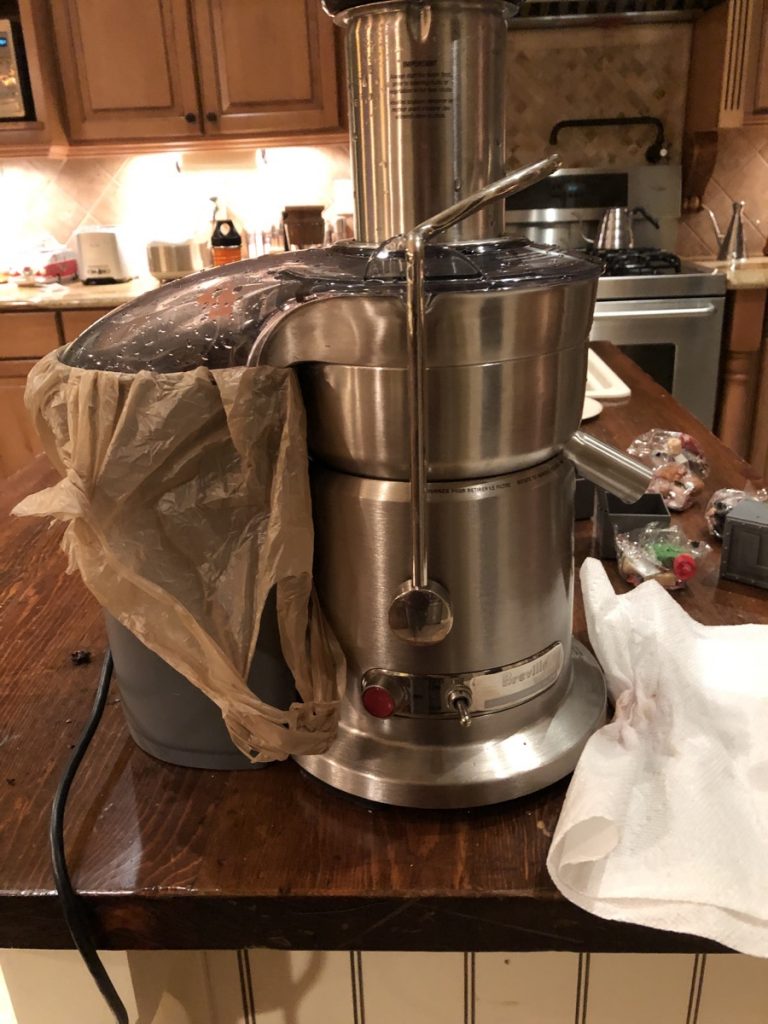
Blueberry: blueberry juice, coriander syrup, green chartreuse, malic acid, Pectinex Ultra SP-L. Malic acid is the acid behind a green apple’s tartness. Its also naturally present in blueberries. It serves to brighten up the blueberry flavor, and help it stand up to the very potent chartreuse. Pectinex Ultra SP-L breaks down pectin structure, and is a useful ingredient for clarifying juices. (For an in-depth discussion of this wonder ingredient, check out the book Liquid Intelligence.) The mixture is left to rest at room temperature for a couple hours, then strained through a chinois, then again through a coffee filter (which I allowed to take place in the refrigerator, overnight). The result was a beautiful, translucent, dark purple brew. The into a bottle and left to chill.
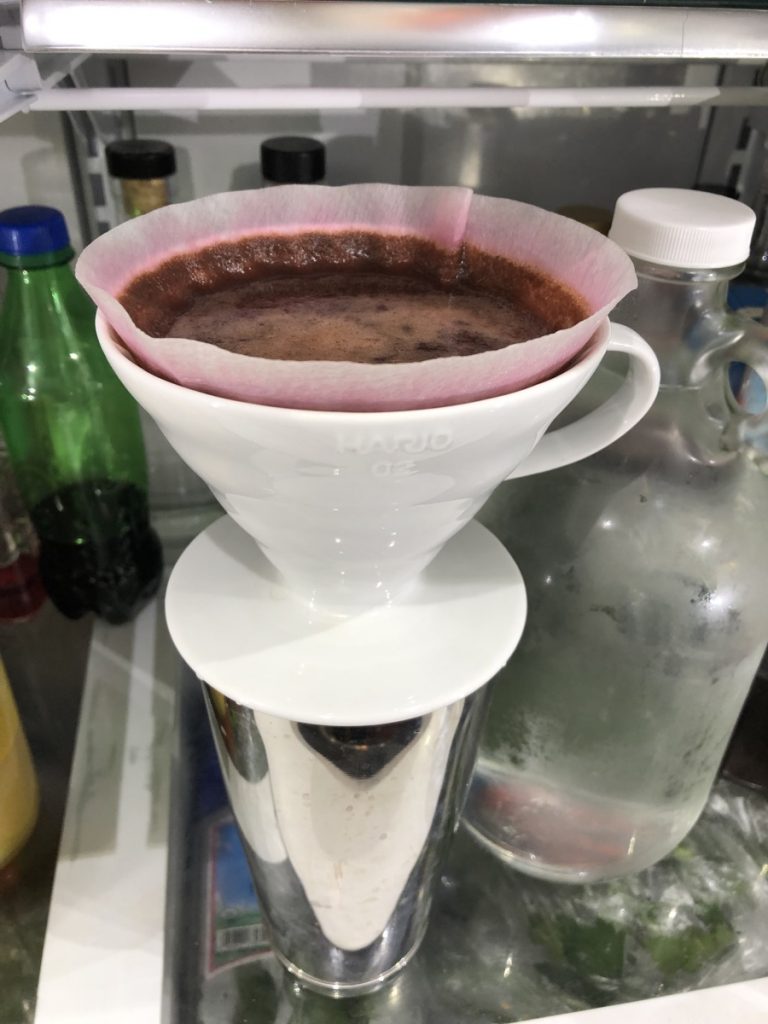
Pineapple: pineapple juice, water, yellow and green chartreuse, citric acid, ascorbic acid. This batch is pretty straightforward. Mix, bottle, chill. I imagine the two acids are there to brighten the flavor and protect the color. I’m surprised the recipe didn’t call for clarification of this juice also. I think it could have used it.
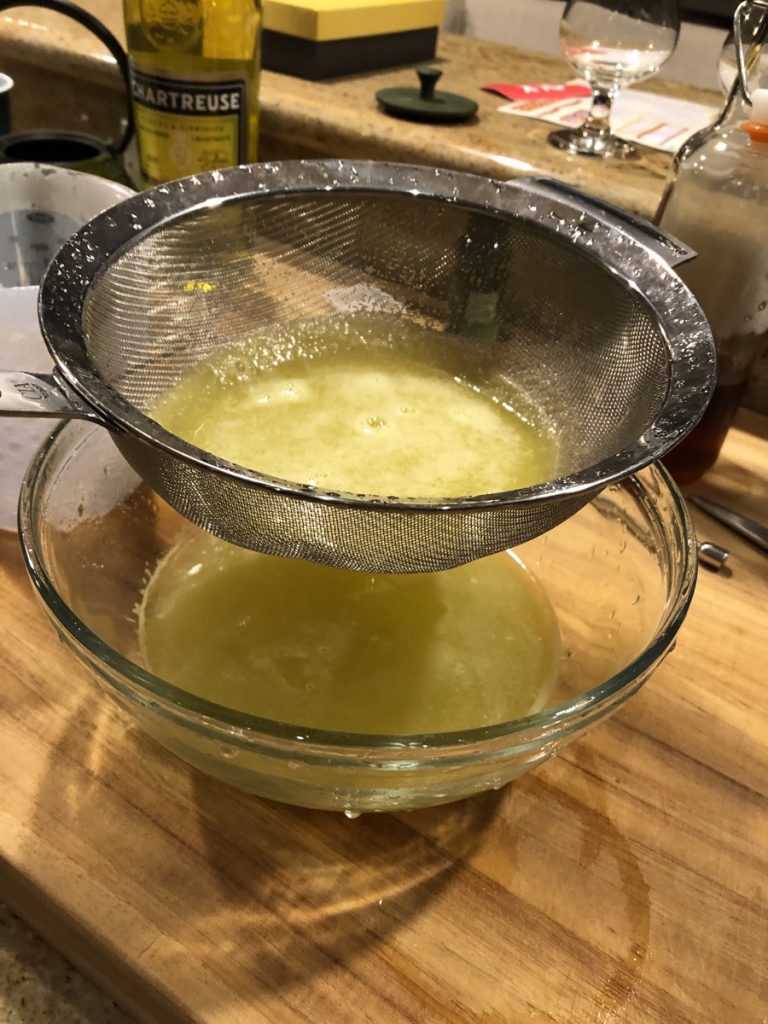
The Day Of:
The last step before glory was to prepare the honeydew melon batch. The recipe warned that this should not be done in advance because it had a tendency to brown quickly. Unfortunately, this necessitated breaking out the juice two days in a row. Oh, the humanity!
Honeydew: honeydew melon juice, lime juice, yellow chartreuse, Chareau Aloe Liqueur (yum). Mix and bottle. I placed this batch into an empty plastic soda bottle, then squeezed all the air out, and capped it. The color didn’t change. Frankly, it was more yellow than green to start with, and it stayed that way.
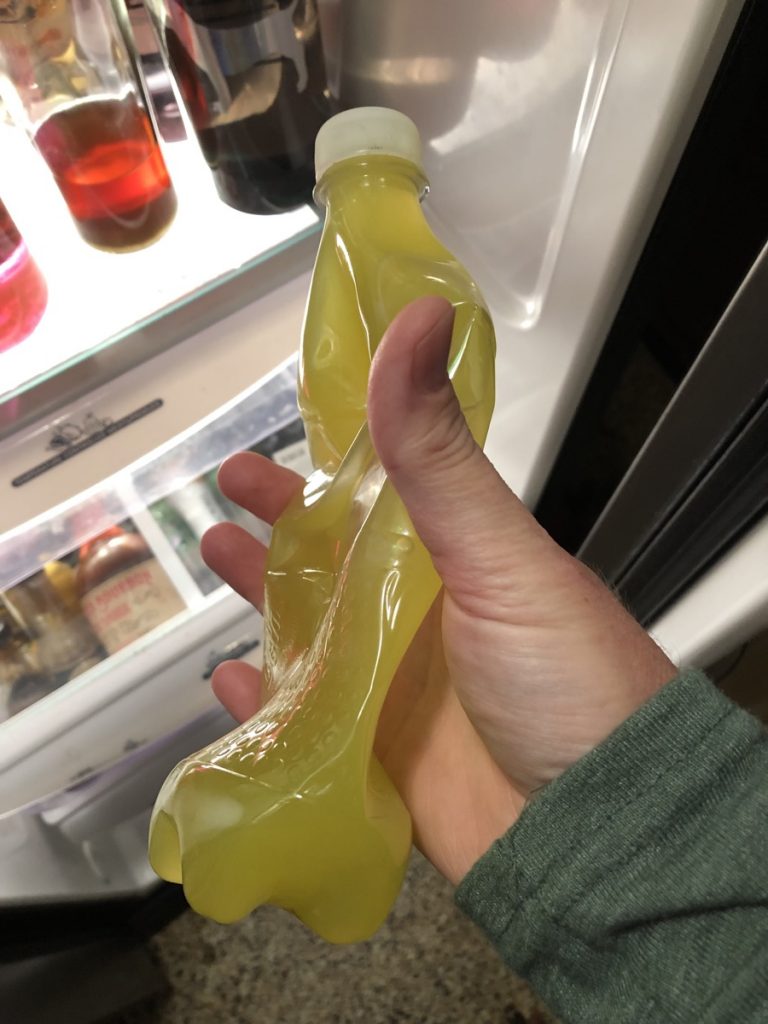
Tasting:
My wife and I enjoyed The Chartreuse Flight (or Study of Chartreuse, as I have taken to calling it) at about 9:30 on a very rainy and cold Sunday night. We sat around our giant scrabble board and sipped away.
Final preparation—I placed a mint ice cube in each of three 5.5 oz brandy glasses. Using a funnel, I added 2.5 ounces of the blueberry batch to the first glass, 2.5 ounces of the pineapple batch to the second glass, then added 1.75 ounces of the honeydew batch to a shaker with ice, gave it a quick shake, then added it to the final glass. I please all three glasses into a decorative storage box that looked like a book, and garnished the space between the glasses with a variety of herbs (mint, parsley, tarragon, thyme).
Impression:
This was a wonderful and varying expression of chartreuse. Generally I find chartreuse liqueur to be simultaneously cloying and severely potent. The fruit juices used here really stood up to the chartreuse well. I particularly like the complexity of the blueberry catch, thanks for the coriander syrup. We both agreed that our favorite was the honey dew batch, and my suspicion is that the Chareau Aloe Liqueur was the secret weapon here.
Overall this was a fun cocktail to make. None of the steps were overwhelming. There was no complicated or expensive equipment necessary. All of the spirits were readily available (thought not all locally). The finished product was very visually appealing. Taste was great.
Remaining Thoughts:
- I’m perplexed about why the juice clarification occurred after mixing it with the liqueur. Clarification always leads to waste. There’s no easy way for me to know how much chartreuse was left behind in the detritus that was filtered out, but it’s likely more than none. Changing the method here would require rethinking the ratios, however, to ensure the balance of alcohol/sugar/acid remain constant. That’s do-able, but probably not worth the effort unless you were going to make this drink frequently. Of course, there maybe something I’m missing, too. Perhaps the chartreuse aids the clarification. Or perhaps the chartreuse doesn’t get held back at all in the filtering process.
- I feel the pineapple juice could would have benefited from the same clarification method. Not all juices respond well to this method, however, so a more elaborate method (such as using agar-agar) may be required. I’m confident you could pre-clarify the pineapple juice and use all the same measurements, as there was no filtering involved that would alter the alcohol/sugar/acid ratios.
- In my preparation the color of the pineapple batch was very close to the color of the honeydew batch. The honeydew melon juice was very green, and the unused juice has remained green, refrigerated, for more than 24 hours. The color of the batch became more yellow once the yellow chartreuse was added. So, if I make this again, I may experiment with using green chartreuse in this batch, which I believe would dramatically shift the color to green. That would make a noticeable change in taste, though, so that will need to be evaluated.
- On the topic of color—my honeydew batch did not turn brown. Of course, I stored it in the plastic bottle with the air removed, but as mentioned above, the remaining honeydew melon juice has stayed green for more than 24 hours. I believe I could have successfully juiced the honeydew melon one day prior, when I juiced the blueberries and the pineapple. This would have saved some additional setup and cleanup effort. I’d still recommend adding the lime juice at the last minute because the flavor of lime juice changes rapidly once it’s exposed to air.
- Finally, one of the things we both liked about the honeydew batch was the texture and temperature as a result of it being shaken with ice. I would like to shake all of the batches. However, that shaking adds a significant amount of water through dilution (quick guess is ¾ ounce of water added to the 1 ¾ ounce of batch mixture). This dilution would need to be considered if you shake the other batches, with either more chartreuse or less fruit juice added. One idea would be to make ice cubes out of blueberry juice and pineapple juice, then shake with those. You could weigh the before and after to determine the exact amount of diluted juice added, then reduce your batch by that amount for each cocktail.

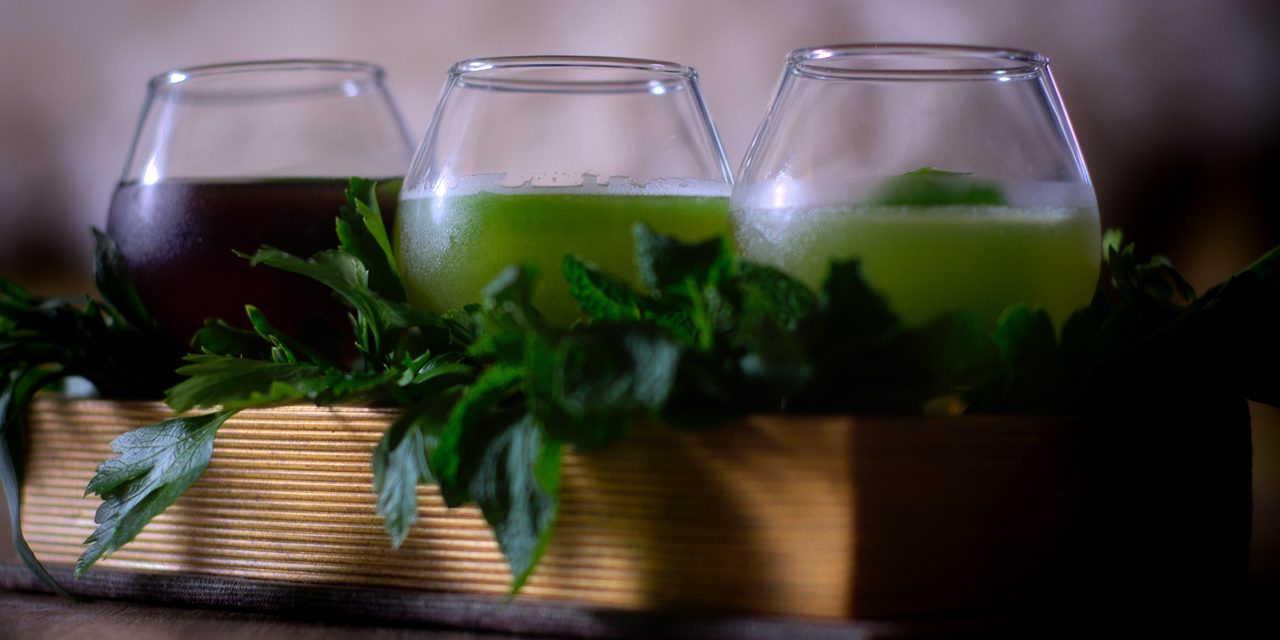
I know it`s kind of late now, after you published your stories on so many recipes, but wouldn’t have been nice to add the actual quantities to the recipes. Are you leaving them out intentionally?
Hi Alex — I consciously decided not to publish to quantities — out of respect to the original authors. I’d like to encourage people to purchase the book. I intend for this blog to be about my attempts to make the recipes, and not the recipes themselves. Thanks for your comment!